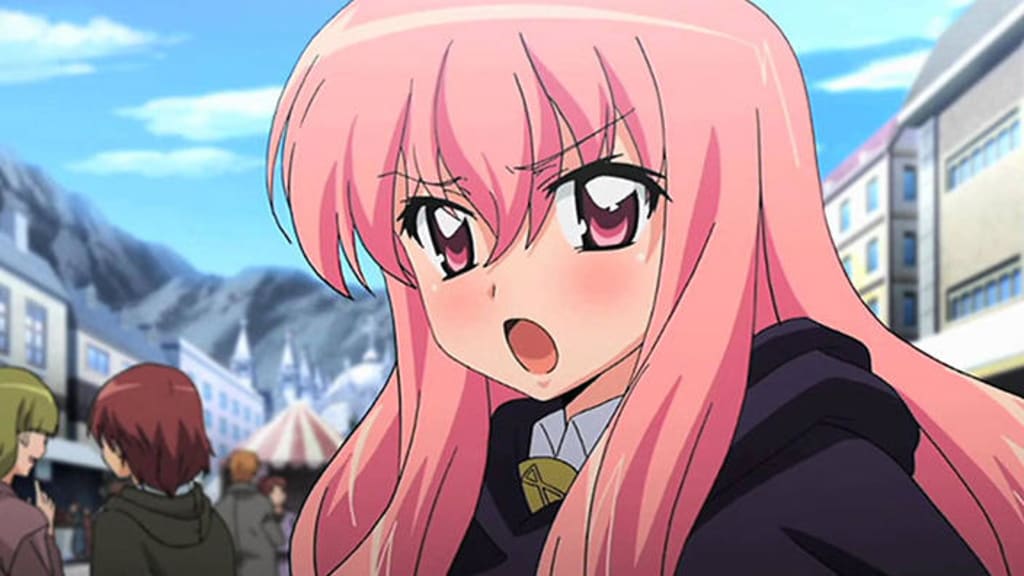
The Masters of Passive-Aggression
Tsundere characters pack a punch when they’re introduced in the story. They are the kings and queens of passive-aggressive behavior, and are often misjudged because of their mood swings, but that’s why they’re memorable and, to some, charming. So, how do we make our own tsundere that doesn’t blend in with the rest of the loudmouths? Let’s start with what makes the tsundere who they are, and then look over some prompts and Jungian archetypes to help your character stand out.
The Seven Ingredients of a Tsundere
Common Alignment System Position: Chaotic Good, Chaotic Neutral, or Chaotic Evil
1. Backstory: What made them so mean?
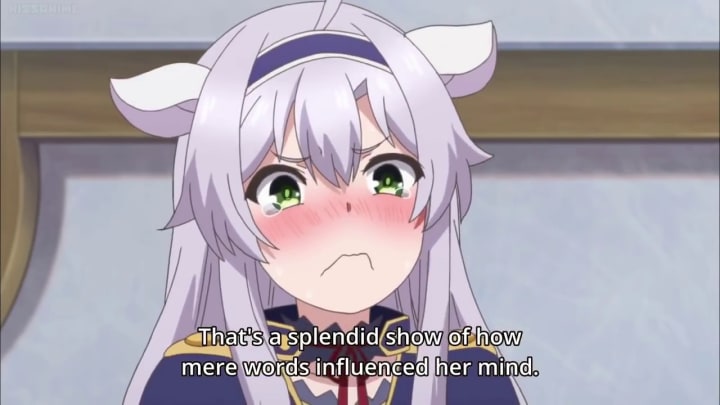
A tsundere’s backstory isn’t just about a harsh relationship with parents, fellow school peers, or childhood friends. Something was stolen from them: trust. Losing trust in others is what convinces a tsundere to create a battle fortress around their heart hoping to never experience that kind of pain ever again. Usually, matters of betrayal make the tsundere’s heart harden. Yes, a specific tragedy in their life will give them a reason to be guarded, but the trauma needs to target the part of the them that is sweet and caring; the “dere” side, their most authentic and vulnerable side. The target of a tsundere's backstory is to explain the damage done to their “dere” side. Keep it relatable so your audience empathizes with them rather than judges them unfairly.
2. What does the “dere” side want?
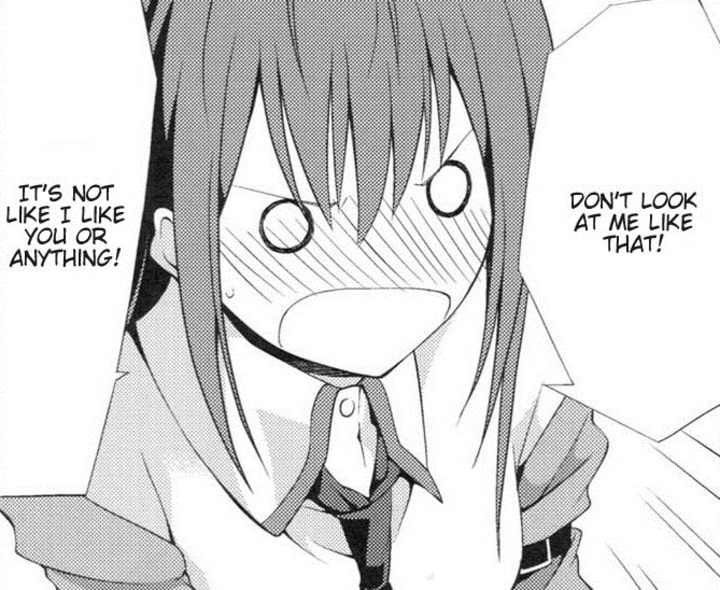
After the tsundere's traumatic past, they will develop a strong desire to find a place for their “dere” side to be safe. This longing should be so strong that it eats away at them when their “tsun” side is weakened. The “dere” is their “loving” side. What or who do they love? When did this love happen and how? And remember of course, this side isn’t shown when others are around.
3. Appearance or Presence

A tsundere portrays innocence and kindness until they hurt someone. Kind of like chihuahuas. Their outward appearance will contradict their attitude to make sure they don’t come off as weak. They dare anyone to underestimate them. The more innocent or charming he or she looks, the more their aggressive actions impact other characters and the audience. Their appearance contradicts only a part of their personality. What they’re projecting through their style reveals a sliver of who they really are.
4. The best defense is a good offense.
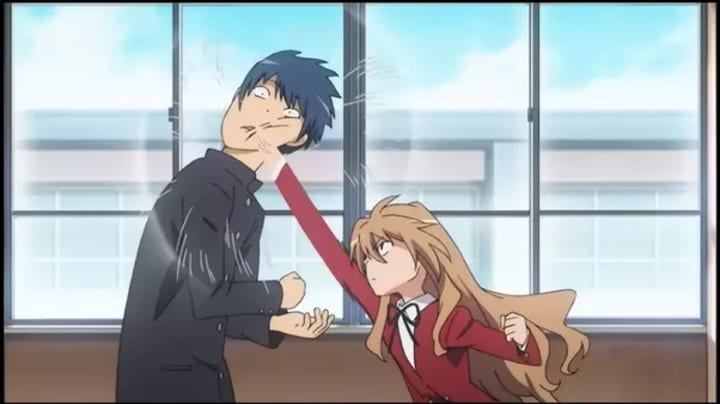
Taking the time to think about how your tsundere puts others in their place is important. It’s pretty cliché to see punches nowadays, but it still works. Our characters should have a list of reasons that justify their abusive actions, even though we know it’s due to their past. How a tsundere attacks others and defends themselves should fit their reputation. Something should “tick” or make them “snap” when a particular event happens. It could be a simple interaction with someone from their past, the friendly touch of someone new, or an item that could spill so many secrets if it could talk. Whatever the trigger is, it must encourage other characters to keep their distance. A tsundere’s attack should be bizarre enough to strike fear into the hearts of others, but a logical defense to the tsundere. Their attacks segue to their backstory and foreshadow the reveal of their true nature.
5. Pour salt in the wound.

by hallow1791.deviantart.com
An essential part of building the tsundere is portraying the unhealthy side of their personality, the bad habits they developed in response to their past. For example, Aisaka from Toradora! (2008) was very distant from her parents, so she wasn’t very hygienic or ate healthy foods. This is where you can show your audience there’s more to your tsundere than just a bad temper and attacking everything. This is your chance to show how the “dere” side copes with past damage. When they’re alone what do they do? Do they have a secret habit that does more harm than help? Is there something or some activity they worship? Those are the kind of questions you answer if you want your tsundere’s personality to have depth. Their flaws are a conscious and/or subconscious response to their past and their present environment.
6. Opportunities to Open Up

The tsundere’s interactions eventually lead up to them facing their inner demons. Events in their life should trigger memories that take them back to the time they lost trust. For example, when a character of the tsundere’s interest and the tsundere get closer, both of them may end up sharing or reliving the past. At this time, the tsundere gets a chance to conquer their fears, lower their defenses, and choose, or consider, connecting with another character more intimately and admit, in their own way, that they want to trust. A tsundere needs a moment to “break free” from their own defenses in a natural way. The trials they you put them through aren’t meant to force them to open up, but rather provide the opportunity to. Whether they take the chance to open up or not is up to you, the author.
Do they ever soften up or get more twisted?

The most uplifting transformation a tsundere can go through is feeling secure enough to showing their true feelings to someone they can trust. Tsunderes are naturally stubborn so they'll keep to their brash and reckless ways, but perhaps show more mercy to those that have changed their heart. On the other hand, they may not get their happy ending and end up becoming more twisted and broken. Either way, the transformation for a tsundere is either a nudge towards softness, still keeping their front, but feeling more secure about their loving side, or let their insecurities spiral out of control and follow a more intense path of self-destruction, since tsunderes tend to expect and accept the worst of the worst of their lives. This transformation appears around the climax or resolution of your character’s story. A pivotal event connected to their past and their present should make the tsundere’s development crystal clear.

Now that we have the basic ingredients for a "tsundere", please consider these "What if?" prompts and the following archetypes that can help make your character stand out.
What if...
- What if the tsundere had more variety? - The most memorable tsunderes are female, fair skinned brunettes or redheads. If your character has enough tsundere qualities that will be impressionable to your audience, then push their physical boundaries to make him or her visually memorable. Keep the charm, but play around with everything else: race, species, genetics, and gender. I heard a half-dog demon half-human guy with white hair and golden eyes was a pretty big hit.
- What if more males were tsundere? - Enough with the stereotype stating males aren’t as “emotional” as females. Showing emotion shouldn’t be something to be ashamed about and having a male character portraying this unapologetically would be amazing to see. You may initially feel led to make your tsundere a female, but male tsunderes are just as attractive. If you feel led to go with a transgender or no gender, more power to you.
- What if the tsundere wasn’t searching for “romantic” love? - Tsunderes are commonly seen in “slice-of-life” or “school” stories where they are striving to gain the attention of their crush. If you fiddle around with that backstory enough, your character could long for something along the lines of friendship or family, which is good to uphold in a story. Perhaps, even reaching a dream and knowing that bonding with others will be the only way to get there. Not everything is about romance for the tsundere. Platonic relationships are just as endearing.
Archetypes

Here are some archetypes your tsundere could fit. This archetype listed is referenced from The Power of Archetypes by Marie D. Jones (2017)
- Anti-Hero: Does not embody the normal traits of a hero such as moralism, idealism, and even courage, and in fact does the heroic thing mainly for self-satisfaction or some ego-centric need.
- Artist: A creator of art and beauty; someone who sees the artistic and creative side of things.
- Beast: A monster…can also be a positive and beneficial creature met along the hero’s journey, and a part of us that is perhaps big in scope, a little out of our control, but not harmful if befriended. It can also be the ugly side of us we sometimes express that hides an inner vulnerability.
- Chosen One: A person who is chosen by a religious tradition, a particular culture, or perhaps a myth such as the dangerous adventure in which only he or she can succeed at.
- Desperado: A male or female who is broken and alone and often because of their own fear and avoidance of others.
- Devil: Represents the opposite of light, goodness, morality, virtue, and peacefulness. Male or female, the devil archetype is the shadow self and the dark side…Can also represent free will and the ability to choose that which is not good or for the benefit of others.
- Doppleganger: A literary archetype that identifies the duplicate or shadow/evil part of the personality.
- Explorer: The adventurer… the one who explores and is curious to seek out a quest or adventure…
- Father: An authority figure that is often harsh…fatherly, but can also be supportive, proud, and a mentor. (Please take a moment to consider how adorable a tsun-daddy would be!)
- Fool: Confused and often wandering aimlessly.
- Free Spirit/Gypsy: Does not like rules…the free and unlimited aspect of self…Unique, authentic, and exotic.
- Geek/Nerd/Genius/Loner/Orphan/Survivor: Different, possibly isolated, and possibly too embarrassed to display who they are to others until they find their tribe. Often deals with struggles alone.
- Girl/Boy Next Door: Represents wholeness… seeks to be normal and accepted and hopes not to stand out.
- Lover: The romantic aspect… nurturing, caring, expansive aspect of heart and spirit…. sensual.
- Magician: Possesses magical abilities and knowledge. A visionary and manifester of dreams.
- Scapegoat: The one that suffers because of the sins and shortcomings of others. This is the aspect within us that suffers our bad choices, negative thinking, and destructive behaviors.
- Warrior: The fighter within… faces challenges with bold courage. Does not give up.
Would you like me to break down another archetype in anime? Find me on Twitter under @Authentikei and tell me!
About the Creator
ChaosKei
I write about anime because I'm obsessed with it, but in a writer kind of way.

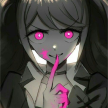




Comments
There are no comments for this story
Be the first to respond and start the conversation.